Japan until the end of the late Middle Ages was hidden from the whole world: neither enter nor leave. But as soon as the high walls fell, the world began to actively study this mysterious country, in particular, education in Japan.
Briefly about the main thing
In the Land of the Rising Sun, education is one of the first and main goals in life. It determines the future of man. The education system in Japan has not changed much since the 6th century. Although after the Second World War, it was strongly influenced by the British, French and, especially, American systems. Inhabitants of Japan begin to study practically with diapers. First, parents instill in them manners, rules of conduct, teach the basics of counting and reading. Further crib, kindergarten, primary, secondary and high schools. After them, universities, colleges or special vocational schools.
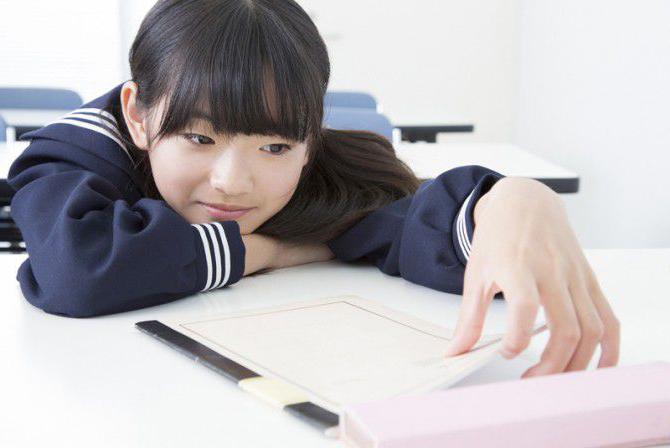
The academic year is divided into three semesters:
- Spring. From April 1 (this is the beginning of the school year) to mid-July.
- Summer From September 1 to mid-December.
- Winter. From the beginning of January to the end of March. The school year ends in March.
After each semester, students take intermediate tests, and exams at the end of the year. In addition to the lessons, the Japanese have the opportunity to attend circles and participate in festivals. Now let's take a closer look at education in Japan
Preschool
As already mentioned, etiquette and behaviors are inculcated by parents. In Japan, there are two varieties of kindergartens:
- 保育園 (Hoikuen) - State Center for Child Care. These institutions are designed for the smallest. According to a government decree, they were created specifically to support working mothers.
- 幼稚園 (Youchien) - private kindergarten. Such institutions are designed for older children. They teach singing, drawing, reading and counting. More expensive institutions learn English. So they come to school fully prepared.
It is worth noting that the main function of kindergartens is not so much education, but socialization. That is, children are taught to interact with peers and society as a whole.
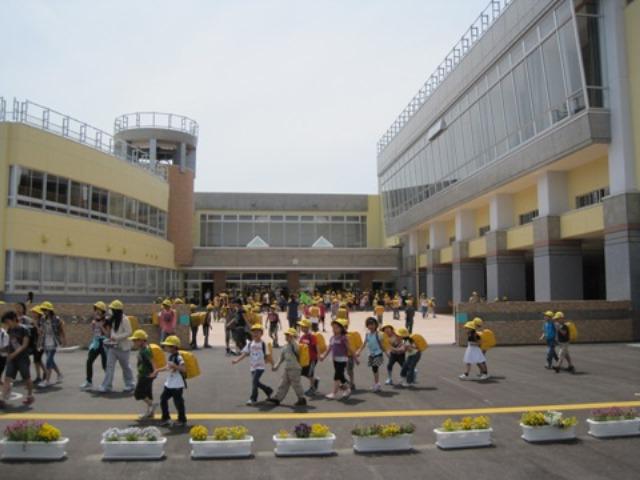
Primary School
Education in Japan in primary school begins at the age of six. Most of these establishments are state-owned, but there are also private ones. In elementary school, they teach Japanese, mathematics, science, music, drawing, physical education and labor. Recently, it has been mandatory to introduce English language teaching, which earlier began to be taught only in high school.
There are no circles as such in the elementary school, but extra-curricular activities, such as sports competitions or theatrical performances, are held. Students walk in casual wear. The only mandatory element of equipment: a yellow panama, an umbrella and a raincoat of the same color. These are obligatory attributes when a class is led on an excursion so as not to lose children in the crowd.
secondary school
If you translate into a Russian account, then this is a training from grades 7 to 9. A more in-depth study of sciences is added to the subjects of elementary school. The number of lessons increases from 4 to 7. Interest clubs appear, in which students are involved until 18.00. The teaching of each subject is assigned to a separate teacher. More than 30 people study in classes.
Features of education in Japan can be seen in the formation of classes. Firstly, students are distributed according to the level of knowledge. This is especially common in private schools, where it is believed that students with poor grades will have a bad effect on excellent students.Secondly, with the beginning of each semester, students are divided into different classes so that they learn to quickly socialize in a new team.
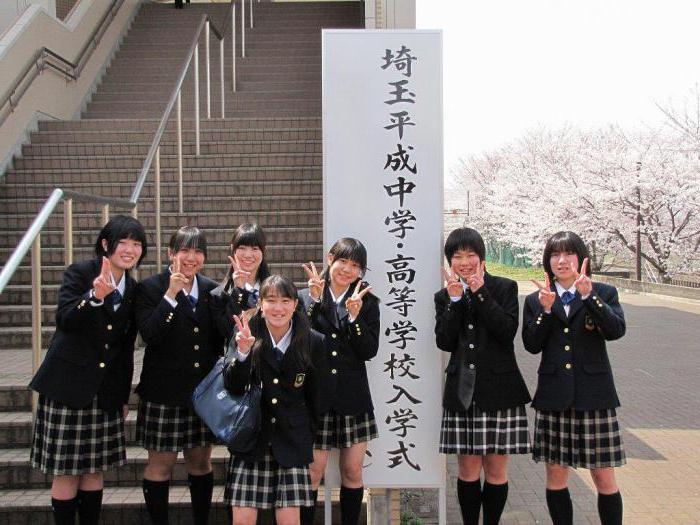
Old school
Education in high school is not considered mandatory, but those who wish to enter a university (and today it is 99% of students) must complete it. In these institutions, the main focus is on preparing students for entrance exams to universities. Students also take an active part in school festivals, circles, and attend excursions.
Juku
Modern education in Japan does not end solely in schools. There are special private schools offering extracurricular activities. They can be divided into two types according to the areas of study:
- Non-academic. Teachers teach a variety of art forms. There are sports sections, you can also learn the tea ceremony and traditional board Japanese games (shogi, go, mahjong).
- Academic. Focused on the study of various sciences, including languages.
These schools are mainly attended by students who have missed classes at school and cannot learn the material. They want to successfully pass the exams or prepare for entry into the university. Also, the reason why the student can insist on attending such a school may be closer communication with the teacher (in groups of about 10-15 people) or for company with friends. It is worth noting that such schools are expensive, so not all families can afford them. However, a student who does not attend additional classes has a knowingly losing position among his peers. The only thing he can compensate for is self-education.
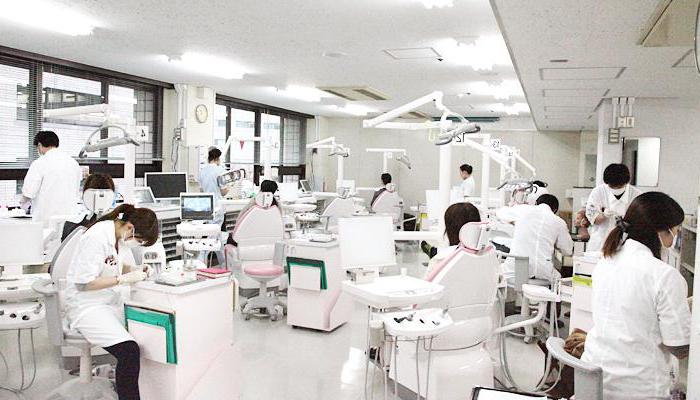
Higher education
Higher education in Japan is mainly for men. For women, like centuries ago, the role of the guardian of the hearth, and not the leader of the company, is assigned. Although exceptions are increasingly common. Higher education institutions include:
- State and private universities.
- Colleges.
- Schools of vocational training.
- College of Technology.
- Institutions of further higher education.
In colleges, mostly girls study. The training is 2 years, and is taught mainly in the humanities. In technology colleges they study individual specialties, the term of study is 5 years. After graduation, the student has the opportunity to enter the university for 3 courses.
There are 500 universities in the country, 100 of which are state-owned. To enter a public institution, you must pass two exams: “General test of achievements of the first stage” and an exam at the university itself. To enter a private institution you need to take only a test at the university.
The cost of training is high, ranging from 500 to 800 thousand yen per year. There are programs to get a scholarship. However, there is a big competition: for 3 million students, only 100 budget places.
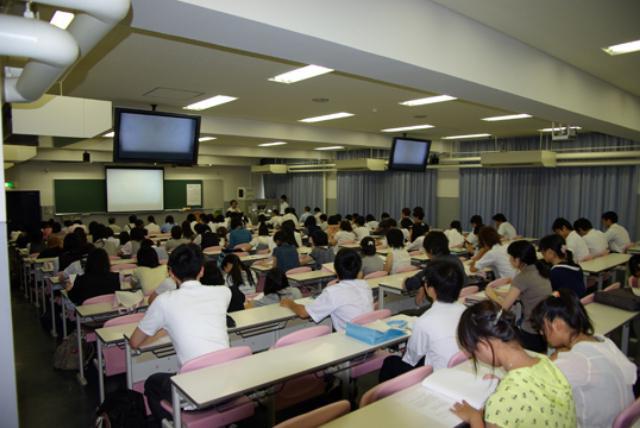
Education in Japan, in short, is expensive, but the quality of life in the future depends on it. Only those Japanese who graduated from higher education institutions have the opportunity to get a well-paid job and hold leadership positions.
Language schools
The education system in Japan is a cult that leads the country to success. If in the post-Soviet space a diploma is a beautiful plastic crust, which testifies that a person has been doing something for 5 years, then in the country of the Rising Sun a diploma is a pass to the bright future.
Higher education institutions accept international students due to the aging of the nation. Each gaijin (foreigner) has the opportunity to receive a scholarship if his knowledge in a certain field is high. But for this it is necessary to know Japanese well, therefore, there are special language schools for foreign students in the country. They also offer short-term Japanese courses for tourists.
Interesting to know
Studying in Japan is difficult but fun.After all, students have the opportunity to develop harmoniously, make decisions independently and decide their own future. So, education in Japan, interesting facts:
- In elementary school, students are not given homework.
- Primary and secondary education is compulsory and free of charge in state institutions.
- To enter school, you need to pass exams, those who could not pass can try their luck next year.
- Schoolgirls should not dye their hair, wear makeup and jewelry, except for watches. The appearance of students in schools is carefully monitored. Even socks can be removed if they are not the same color as needed.
- There are no cleaners in schools. Starting from the initial, students after classes finish cleaning the classes and corridors themselves.
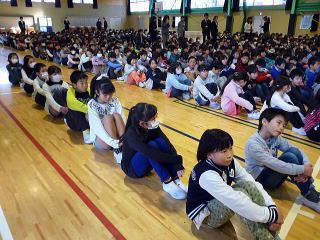
- Also, each group of class students has their own responsibilities. There is a group that is responsible for cleaning the school grounds, organizing events, healthcare, etc.
- In schools, the composition of students often changes so that children learn to quickly join the team. In higher education institutions, groups are formed according to the selected subjects for study.
- "Lifetime Hiring System." Education in Japan is also notable for the fact that many universities cooperate with high schools, accepting students with good grades. And above the universities are well-known companies that take graduates to work. A Japanese graduated from a university can be confident in future employment and career advancement. Many Japanese people go from a junior employee to the head of a department / branch and retire with a sense of accomplishment to the country.
- Vacations last only 60 days a year.
- A unique uniform is established in high school and high school.
- Each academic year begins and ends with ceremonies at which beginners are greeted and graduates are congratulated.
Mugs and festivals
The development of education in Japan is rooted in antiquity. Already in the 6th century there was a national education system. The Japanese have always been supporters of early and harmonious development. This tradition continues today. In middle and high school, students are given the opportunity to attend hobby groups. Each circle has its own scientific supervisor, but he intervenes in the club’s activities only when there are competitions or creative contests between schools, which happens quite often.

During the holidays, students attend school-organized excursions. Trips are carried out not only within the country, but also beyond its borders. After trips, each class is obliged to provide a wall newspaper in which it will describe in detail everything that was on the trip.
In high school, special attention is paid to such an event as the autumn festival. The school provides 30,000 yen for each class and buys t-shirts. And students are obliged to come up with an event that will entertain the guests. Most often, cafeterias and fear rooms are organized in classes, creative teams can perform in the assembly hall, sports sections organize small competitions.
Japanese schoolchildren have no time to wander the streets of the city in search of entertainment, they are enough for him at school. The government did everything possible to protect the younger generation from the influence of the street, and this venture they did very well. Children are always busy, but they are not mindless robots - they are given the right to choose. Students organize most school and university events on their own, without the help of supervisors. They come into adulthood already fully prepared, this is the main feature of education in Japan.